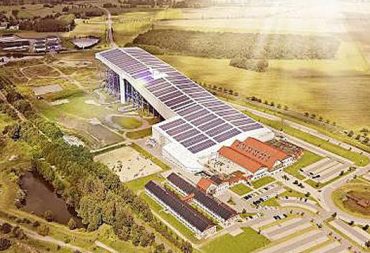Indoor Snow Centres Announce Plans to Stay Open (or Close) Despite (or Due To) Energy Costs This Winter

The energy crisis in Europe resulting from the Ukraine War has led to concerns about high-energy using non-essential businesses like indoor snow centres being able to operate this winter.
Germany is one of the three largest operators on indoor snow centres along with The Netherlands and the UK and the country’s centres have begun clarifying whether they will be able to open or have to close this winter.
Now two major German indoor snow centres, The Snow Dome in Bispingen and The Alpin-Center at Wittenburg, say they will be able to keep operating for the foreseeable future due to use of renewable energy, highly energy-efficient operating, or having a long-term energy price cap in place.
However the centre at Snowtropolis centre at Senftenberg, says it will be closed this winter.
The Alpin-Center at Wittenburg ski hall switched to using predominantly renewable energy generating their own power from a rooftop Photovoltaic system early in its operations and a spokesman said that decision is now really paying off. 130,000 square metres of roof space – the area of 10 football pitches – generate 10 making the centre “more or less energy self-sufficient,” a spokesperson said.
They had also cut energy use by 15% during the pandemic by installing improved systems control technology to improve operating efficiency.
Meanwhile the Snowdome at Bispingen confirming they have an energy price fix in place with its suppliers to 2025.
“Since we work very conservatively, a fixed electricity price is safer and more predictable for a long time than highly speculative purchases on the spot market at current prices,” a spokesperson said.
The centre also says they are reaping the rewards of an upgrade to its floor cooling system 2013 which had already led to a 60 percent cut in the amount of energy used compared to before. The centre also has further efficiency plans in place which should cut energy use by another 20% this winter.
“We are now in the process of planning photovoltaics and wind energy so that we are completely self-sufficient in 2025/2026 and are not dependent on the electricity exchange or the federal government,” the spokesperson continued.

